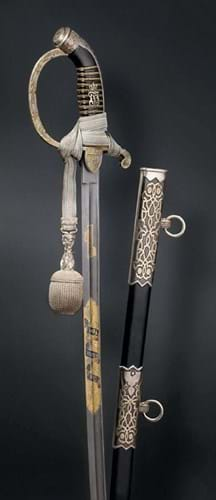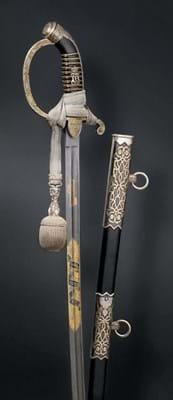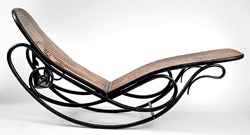First up was one of only 40 helmets made for the palace guard during the short reign of Emperor Maximilian I of Mexico.
In 1864 he had travelled to Mexico at the behest of Napoleon III and declared himself emperor. During the six-week voyage across the Atlantic, Maximilian designed all the uniforms for his palace guard, including this partly gold-plated helmet, surmounted by a Mexican eagle.
Only three years later, however, he was deposed, arrested and executed by the Mexican government. Many members of the palace guard were killed during the uprising and as a consequence very few of these helmets have survived.
Considerable international interest emerged when it came under the hammer with a guide price of €25,000. In next to no time the bidding reached an impressive €135,000 (£119,470), with a Mexican collector reclaiming a piece of national heritage.
Archduke’s sword
Soon afterwards, this price was eclipsed by the result for a cavalry sword presented to Archduke Franz Ferdinand of Austria-Este (1863-1914), the brother of the Austrian Kaiser Franz-Joseph I, by Prince Ludwig Ferdinand of Bavaria.
The archduke was the proprietor of the Royal Bavarian 2nd Schwere Reiter regiment.

A cavalry sword presented to Archduke Franz Ferdinand of Austria-Este (1863-1914) – €200,000 (£176,990) at Hermann Historica.
The sword has a silver hilt, a curved Damascus blade and a handle made of horn set with diamonds and gold appliqués. Its provenance was confirmed in a letter from 1980, written by Prince Joseph Clemens of Bavaria.
The auctioneers had been expecting €15,000, but the dealers and collectors bidding aimed much higher. An anonymous bidder in the room paid €200,000 (£176,990).

















